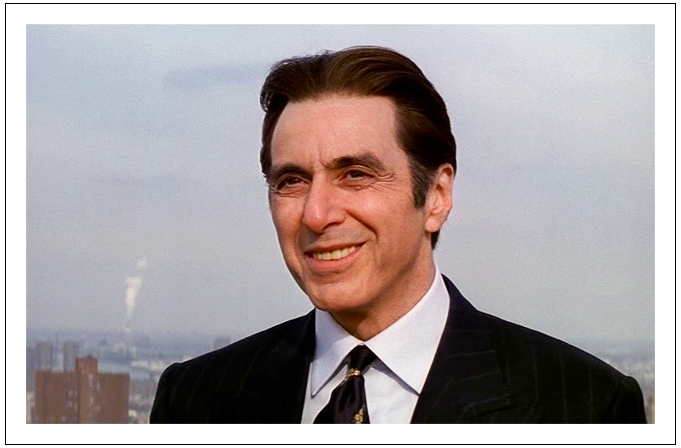The battle between good and evil is as old as time itself and is one of the most common themes in storytelling. It’s a versatile subject that can be played out across national borders, between a detective and his quarry or as an inner conflict. Then there are the characters who portray the good and the bad: those who look to the light, and those who turn away. At its most simplistic those who wear white are good, those who wear black are bad. It is, of course, more nuanced than this but what has developed, intentionally or not, is that sartorially, men and women of evil have the best wardrobes.
The Invisible Man: Busy Day
Stories, whether in literature or film, are rife with fiendishly stylish characters. Take Dracula in his tuxedo; Victor Frankenstein’s early manifestation of the three-piece suit, and The Invisible Man relaxing in a smoking jacket after a hard day terrorising the local villagers. We will return to Dracula later but for now let’s start with the very personification of evil itself, the devil.
I’m a man of wealth and taste.
At some point, the devil dispelled with the red hues and horns opting instead for human form and a bespoke suit. A point reinforced by one Mick Jagger who in ‘Sympathy for the Devil’ introduces us to Lucifer as ‘a man of wealth and taste’. This theme continues with recent portrayals from Robert De Niro in Angel Heart (1987) and Al Pacino in The Devil’s Advocate (1997). Both men are well-dressed with De Nero’s character, Louis Cyphre, dressing in a dark three-piece suit seen here via the IMDb site, white shirt and a dark patterned tie. This timeless ensemble is topped off with a cane. Here is a stylish man with seemingly impeccable manners who can walk among us, almost unnoticed, to do his work.
Al Pacino as John Milton in The Devil’s Advocate
In The Devil’s Advocate, Al Pacino plays John Milton (a nod to the author, of the same name, of Paradise Lost). Playing opposite Keanu Reeve’s character, defence attorney Kevin Lomax, Milton heads up a law firm in New York City. Milton dresses accordingly. In fact, he utters the words “Vanity, definitely my favourite sin” which he nourishes with a range of dark single and double-breasted suits.
”Vanity, definitely my favourite sin.”
Truly bespoke suits afford the wearer a sense of authority and power which is the perfect choice for John Milton. Pacino himself is no stranger to the sartorial excellence of course. One just has to look at his wonderfully wicked portrayals of Michael Corleone in The Godfather and Tony Montana in Scarface. It does not matter if Pacino is 5’7 (1.7m), a good bespoke suit transcends your dimensions.
Dracula receives a visit from his tense tailor
Returning to Dracula, he is arguably the most formal of them all in a variation of white tie and tuxedo (avec cape). It is a look very much associated to our man from Transylvania. It was not, however, always the case.
One of the first film portrayals (that survives) is the 1922 German film, Nosferatu, which was based on Bram Stoker’s Dracula. In the movie, Max Schreck plays Count Orlock who resembles an upright Gollum (from The Lord of the Rings) with no neck. With terrorising mainly on Orlock’s mind, there is little time or consideration for dressing well. For much of the film, he appears in a long military style overcoat which given the environment of Eastern Europe in winter is probably a wise choice.
Nosferatu & his limited wardrobe
To see improvements in vampire fashion we look to Bela Lugosi’s portrayal of Dracula in 1931. It is in this film in which the aristocratic style was cemented with the tuxedo and cape. This look, however, was not conceived in this film but in a previous 1924 stage production of Dracula in London. It was in this production that actor Raymond Huntley portrayal introduced us to the Dracula we know today. Like Huntley, Bela Lugosi had also starred in Dracula, on Broadway, and made his own additions with the ornamental medal worn on his chest.
Overdressed for a night in? Never! Bela Lugosi’s Dracula
In Bram Stoker’s Dracula 1992 film we see Dracula’s wardrobe evolve. The film also affords the opportunity to see our vampire as a young and old man. As an old man, and sporting one of cinema’s famous hairstyles, we see Gary Oldman’s Dracula opting for a crimson full-length silk evening gown with gold embroidery. As a young man, he wears a fitted grey three-piece suit with a top hat. It’s a look that reminds one of Beau Brummell, the original dandy, whose impact on men’s suits is immense. See our earlier piece on the History of the Suit. Like Brummell, the younger Dracula focuses on the perfection of cut, over flair, quality of cloth and conservative colour.
Brummell, his reflection & his tailor
Space and deadlines do not allow us to consider those fine actors who not only looked stylish on screen but did a good job at being bad. Actors like Peter Cushing, Vincent Price, Christopher Lee and Boris Karloff embodied a devilish style in their roles. Nor do we have time to consider femme fatales such as Cate Blanchett in any evil part; Lena Headey as Cersei Lannister in The Game of Thrones; Grace Jones in Bond’s A View to a Kill and Daryl Hannah as Elle Driver in Kill Bill.
Good vs. Evil: Ary Scheffer 1854
Good is of course good. It is something most aim for in this life - or in this life for the next. Although the battle between good and bad favours the former in stories; goodness loses out on style. Asked to name well-dressed villains and the list is long. Asked to do the same for the virtuous and the task becomes more challenging.
In reality, however, we are not constrained with such issues. Where ever we are on the sliding scale between good and evil we have the choice to dress well. Whether we choose to dress-down or embrace the fine things in life like Savile Row tailoring we know this not to be an indictment on our souls. Don’t we?









